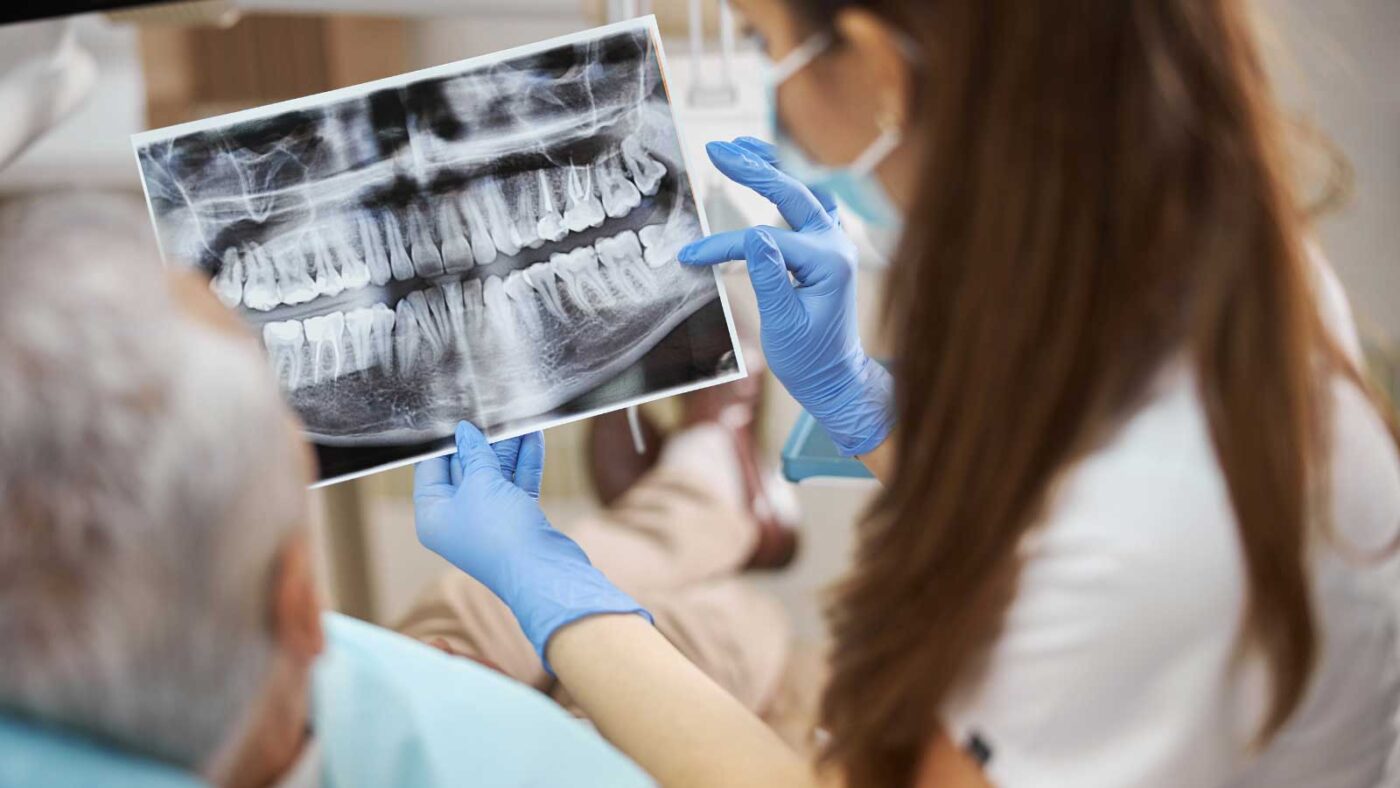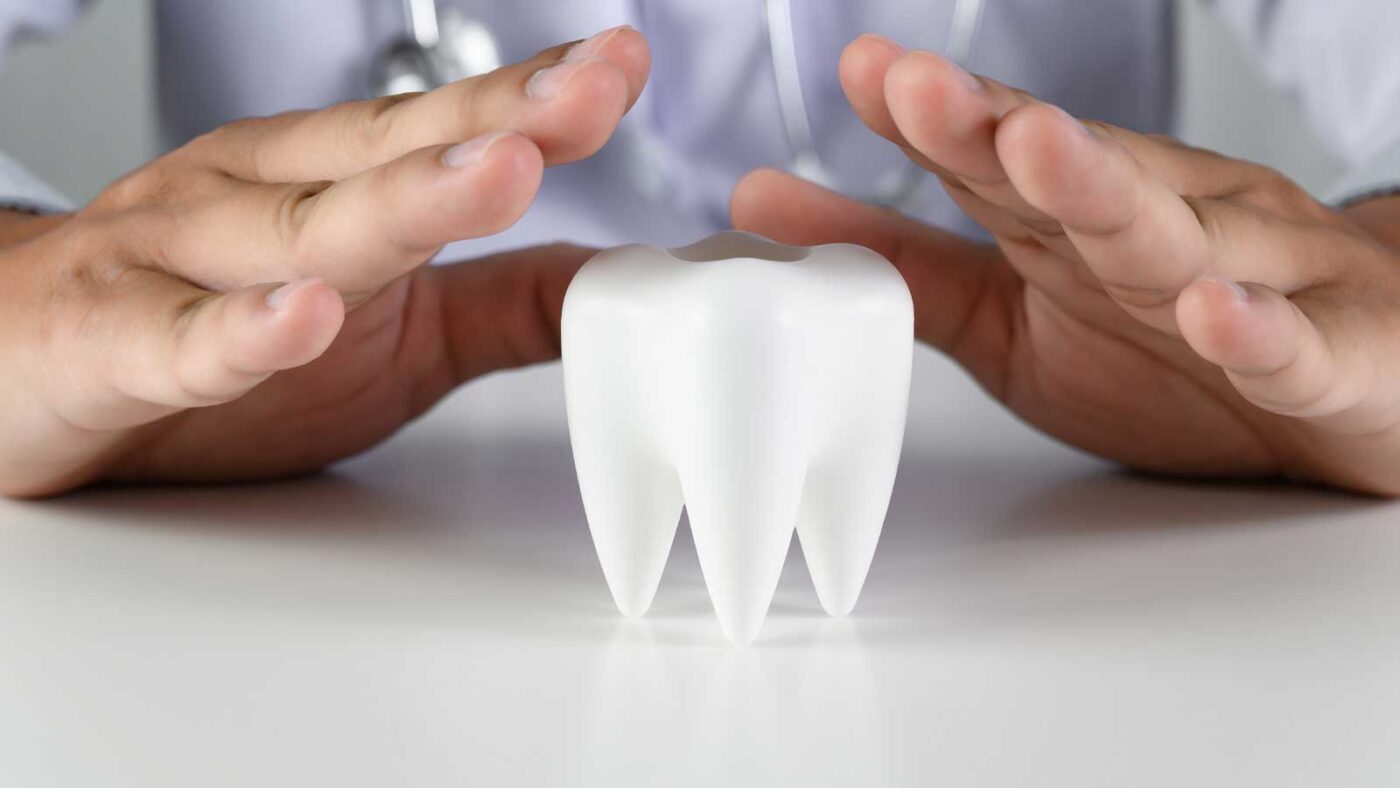Cracked Tooth Syndrome

Sharp pain while chewing, lingering sensitivity to hot or cold foods, or discomfort that comes and goes without warning might signal cracked tooth syndrome (CTS). Unfortunately, cracks can be too small to see, leaving many unaware of the cause of their pain.
In this blog, we’ll cover everything you need to know about CTS—what it is, why it happens, and how to treat it. Left untreated, cracked teeth can lead to infections or even tooth loss. Early detection is essential, and an experienced endodontic specialist can help diagnose and manage the condition before it worsens.
Table of Contents
- What Is Cracked Tooth Syndrome?
- Symptoms of Cracked Tooth Syndrome
- Pain When Biting or Chewing
- Temperature Sensitivity and Gum Swelling
- Intermittent Pain and Difficulty Locating the Affected Tooth
- Changes in Bite or Jaw Pain
- Causes and Risk Factors for Cracked Tooth Syndrome
- Physical Trauma and Dental Injuries
- Misaligned Bite and Teeth Grinding
- Weakened Tooth Structure
- Age-Related Tooth Wear and Environmental Factors
- Treatment Options for Cracked Tooth Syndrome
- Final Thoughts?
What Is Cracked Tooth Syndrome?
Cracked tooth syndrome happens when a tooth develops a fracture that’s not visible. Unlike completely broken teeth, these cracks are often microscopic and can be hidden beneath the enamel or deeper layers of the tooth. Due to their small size, standard X-rays might not detect them, so it’s common for people to experience symptoms for months before getting the right diagnosis.
Cracks can worsen over time, causing pain and allowing bacteria to enter the tooth, potentially leading to infection or decay. If untreated, the crack can worsen and eventually require more invasive treatments. Seeking care early on is crucial.
Symptoms of Cracked Tooth Syndrome
Cracked tooth syndrome can be difficult to identify because its symptoms often come and go. The discomfort varies from mild to severe and can affect different parts of the mouth, making diagnosis challenging.
Symptoms of cracked tooth syndrome include:
Pain When Biting or Chewing
Pain while biting down is one of the most common signs of a cracked tooth. The pain can be sharp and sudden, often triggered by chewing certain foods or applying pressure at a specific angle. Unlike a cavity, which causes persistent pain, CTS pain tends to be intermittent, making it easy to dismiss at first.
Over time, the discomfort may become more consistent, even when chewing softer foods. The pain results from the crack opening slightly under pressure, irritating the inner layers of the tooth. Once the pressure is released, the crack closes, and the pain fades. Without treatment, the fracture can deepen, leading to more severe and prolonged discomfort.
Temperature Sensitivity and Gum Swelling
Increased sensitivity to hot or cold foods is a common symptom. The crack exposes the inner dentin, which allows temperature changes to reach the nerve. This can cause discomfort that lingers longer than usual.
You may also notice gum swelling around the affected tooth, especially if bacteria enter the crack, leading to irritation or infection. This swelling may indicate that the crack is worsening and needs professional care.
Intermittent Pain and Difficulty Locating the Affected Tooth
Unlike cavities or infections, which usually cause pain in a specific location, CTS pain is unpredictable. It may appear one day and disappear the next, making it difficult to pinpoint the exact tooth causing the discomfort. This irregular pain pattern often leads patients to delay treatment, assuming the issue has resolved on its own.
The crack may also cause discomfort in surrounding teeth due to referred pain. This means the pain might not be felt directly where the crack is but rather in nearby teeth or even the jaw. The uncertainty in locating the damaged tooth can make diagnosis tricky, requiring a skilled dentist or endodontist to conduct a thorough examination.
Changes in Bite or Jaw Pain
Some people with CTS notice subtle changes in their bite. The cracked tooth may feel slightly raised or misaligned when biting down. This happens because the fracture weakens the tooth’s structure, causing slight shifts in position. If the crack progresses, it can disrupt normal chewing patterns, leading to additional stress on the surrounding teeth and jaw.
Without intervention, a cracked tooth may require comprehensive root canal treatment to prevent further damage. If left untreated, the tooth could break entirely, leading to severe pain, infection, or even tooth loss. Early treatment is essential to avoid more extensive and costly dental procedures.
Causes and Risk Factors for Cracked Tooth Syndrome
Cracked tooth syndrome doesn’t happen overnight. It develops due to repeated stress, trauma, or weakening of the tooth structure over time. Understanding the most common causes can help prevent future damage.
Those common causes include:
Physical Trauma and Dental Injuries
Accidents, falls, and sports injuries are among the leading causes of cracked teeth. A strong impact on the mouth can cause small fractures that may not be visible immediately but worsen over time. Biting down on hard objects like ice, bones, or unpopped popcorn kernels can also cause cracks, especially in already weakened teeth.
Even if a crack is small, daily chewing can make it grow deeper. Pressure from regular eating or clenching can turn a minor crack into a serious dental issue. Even if they don’t feel immediate pain, those who experience mouth trauma should have their teeth checked by a dentist.
Misaligned Bite and Teeth Grinding
An uneven bite puts extra pressure on certain teeth, increasing the risk of fractures. When teeth do not align properly, some areas take on more force during chewing, leading to stress fractures over time. This is especially common in people with untreated bite issues or missing teeth that shift neighboring teeth out of position.
Teeth grinding, or bruxism, is another major contributor. Many people grind their teeth at night without realizing it, slowly wearing down their enamel and making their teeth more vulnerable to cracks. Wearing a night guard can help protect teeth from excessive grinding pressure and prevent future fractures.
Weakened Tooth Structure
Teeth with large fillings are more likely to crack because the natural structure is already compromised. When a tooth has a significant portion filled, it loses some of its original strength and becomes more prone to fractures under pressure. Older fillings, especially metal ones, can expand and contract with temperature changes, creating stress points that lead to cracks.
Teeth that have undergone multiple dental procedures are also at a higher risk. Repeated drilling and reshaping can weaken the tooth’s overall integrity, making it more susceptible to fractures. In such cases, dentists often recommend crowns to reinforce the tooth and prevent further damage.
Age-Related Tooth Wear and Environmental Factors
As people age, their teeth naturally wear down from decades of chewing, brushing, and exposure to acids from food and drinks. Older enamel becomes thinner and less resilient, making it easier for cracks to form. This is why CTS is more common in adults over 40.
Environmental factors also play a role. Frequent exposure to extreme temperature changes, such as eating hot soup followed by an ice-cold drink, can cause teeth to expand and contract. Over time, this repeated stress weakens the tooth, increasing the likelihood of fractures. Those with a history of acid reflux or a diet high in acidic foods may also have weakened enamel, making them more vulnerable to cracked teeth.
Treatment Options for Cracked Tooth Syndrome
Cracked tooth syndrome requires prompt and targeted treatment to prevent further damage and preserve the tooth. The right approach depends on the severity of the crack, the patient’s symptoms, and the location of the affected tooth.
Dentists and endodontists use strategies for ultimate patient comfort to ensure that treatment is both effective and painless. Early intervention is key, as untreated cracks can lead to infections or even tooth loss.
Common treatment options include:
- Dental Bonding – A tooth-colored resin is applied to seal small cracks and restore tooth integrity.
- Dental Crowns – A custom-made cap is placed over the cracked tooth to reinforce its structure and prevent further damage.
- Root Canal Therapy – If the crack extends into the pulp, a root canal removes infected tissue and protects the tooth from further complications.
- Tooth Extraction – In severe cases where the crack reaches below the gum line, the tooth may need to be removed to prevent infection.
- Night Guards and Bite Adjustments – For patients with bruxism or bite misalignment, a customized night guard or bite correction can help prevent future fractures.
Dentists evaluate each case individually, using X-rays, bite tests, and magnification to detect cracks. The goal is always to save the natural tooth whenever possible while providing long-term relief and stability.
Final Thoughts?
Cracked tooth syndrome is a common yet complex dental condition that can cause significant discomfort if left untreated. Recognizing the symptoms early and seeking professional care can prevent further complications and preserve your natural teeth. Modern dental treatments make it possible to restore cracked teeth and relieve pain with minimal discomfort.
If you experience sharp pain while chewing, sensitivity to hot or cold, or intermittent tooth pain, don’t ignore it—these could be warning signs of a deeper issue.
At Renovo Endodontic Studio, we specialize in diagnosing and treating cracked teeth with precision and care. Our team provides reliable, patient-focused treatment, ensuring that you receive the best possible care for long-term dental health. Call us today for a professional evaluation and expert treatment.

